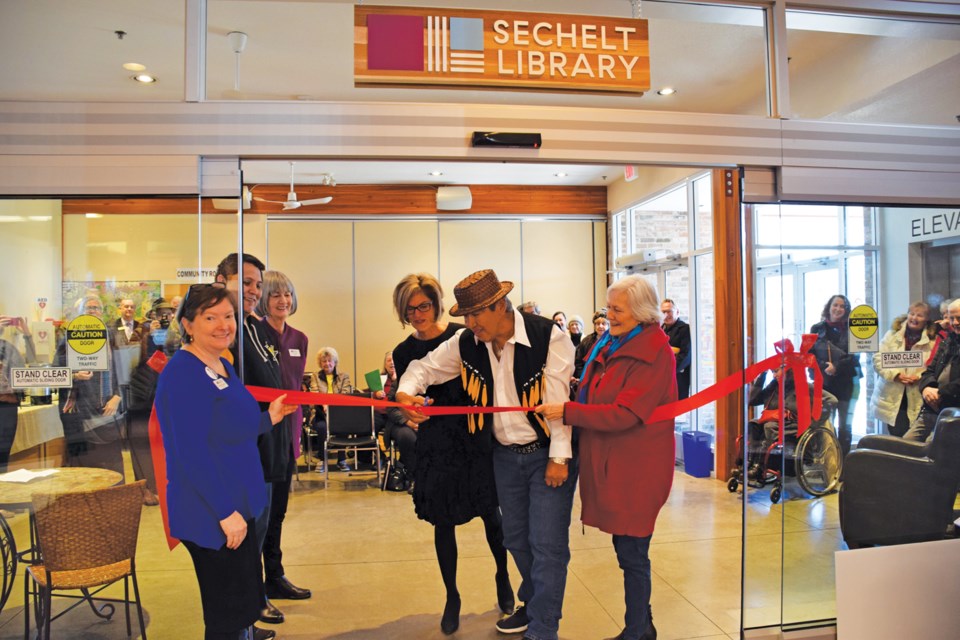There are still some finishing touches to add, but the Sechelt Public Library’s new, more open and accessible entrance area was officially opened Feb. 23.
The entrance includes a new glass door, a pair of automated check-out kiosks, First Nations inspired wall decorations and a custom-made shelf to display the First Nations collection.
The project received $50,000 in federal funding delivered through the Canada 150 Community Infrastructure Program, which was matched by community donations. The new check-out kiosks were donated by the Friends of the Sechelt Library.
West Vancouver-Sunshine Coast-Sea to Sky MP Pam Goldsmith-Jones was on hand to cut the ribbon with the help of chief librarian Margaret Hodgins, shíshálh elder Willard Joe and dignitaries.
“The Sechelt Public Library is an important gathering place for the residents of this community. These upgrades will improve accessibility to the library and will showcase both historical and artistic elements that the entire community can enjoy for years to come,” Goldsmith-Jones said in the official release on the opening. “Without the Government of Canada’s contribution, the library would not have been able to create the barrier-free and welcoming entrance we have today or create a place of prominence for our collection of First Nations resources. These changes communicate our commitment to access for all and pay honour to Aboriginal peoples.”
Steven Feschuk, shíshálh Nation cultural director, told the crowd of around 50 library supporters that having the First Nations collection at the library entrance is a way to preserve and share their history. “We respect our knowledge keepers. We respect that we need to take care of them and learn from them about who we were and where we’re going and I really do see this as an extension of that. I’m excited. We always try to, with open arms, welcome non First Nations people to come learn about us and I see this as the same as for anyone who comes to the [tems swiya] Museum. This is here to come and use as a resource to learn.”



